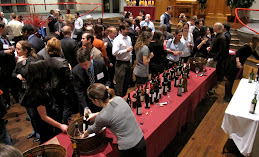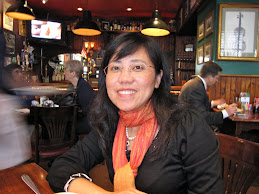For decades Southeast Asian nations have been plagued, particularly in summer months, by transboundary haze from slash-and-burn fires in Indonesia. In June 1990 members of the Association of Southeast Asian Nations (ASEAN) pledged in the Kuala Lumpur Accord on Environment and Development to coordinate their efforts to prevent and abate transboundary pollution. This led to adoption of the 1995 ASEAN Co-operation Plan on Transboundary Pollution, the 1997 Regional Haze Action Plan, and the 2002 ASEAN Agreement on Transboundary Pollution. Despite increased regional cooperation, haze pollution in Singapore reached record levels in June 2013, spurring the Singapore government to further action. In March of this year the government appointed an International Advisory Panel on Transboundary Pollution, including several prominent experts on international environmental law. Earlier this month the Singapore Parliament passed the 2014 Trans-boundary Haze Pollution Act. The Act subjects sources of transboundary pollution to civil and criminal penalties in Singapore courts. Last week the International Advisory Committee submitted its report and recommended options to the Singapore government, which reportedly does not plan to make the report public. Singapore’s National Environmental Agency maintains a website with daily monitoring data on haze and air quality conditions at http://www.haze.gov.sg.
Brazilian environmentalist Marina Silva, who just became a presidential candidate following the death of her running mate, is surging in the polls after a strong performance in the first candidates’ debate last week. Joe Leahy & Samantha Pearson, Silva Shakes Up Barzilian Election with Strong Showing in Televised Debate, Financial Times, Aug. 28, 2014, at 3. Silva grew up in a remote indigenous community of rubber tappers and was a friend of Chico Mendes, the Brazilian environmentalist who was murdered by ranchers. In 1996 Silva won the Goldman Environmental Prize for Central and South America. She served as Brazilian Environment Minister from 2003-2008. Running as a Green Party candidate for president in 2010, Silva won more than 19% of the vote. Silva had been the vice presidential candidate of the Brazilian Socialist Party until the death of the party’s presidential candidate Eduardo Campos in a plane crash on August 13.
Royal Dutch Shell reapplied last week for permits to drill off the north shore of Alaska while also negotiating a sale of some of its assets in Nigeria. Shell said that it had not made a decision to drill in the Arctic next year, but tht it was filing an exploration plan with the U.S. Bureau of Ocean Energy Management in order to keep its options open. Mishaps cut short Shell’s last effort to drill off Alaska in 2012 and a court ordered new environmental studies before Shell could return there. Shell reportedly will sell four oil fields and a pipeline in Nigeria to Nigerian firms as it seeks to reduce its exposure in a country that is moving to impose more stringent terms on foreign oil producers. Anji Raval and Javier Blas, Shell-led Consortium Close to Sale of Nigeria Oilfields to Local Buyers, Financial Times, Aug. 28, 2014, at 11.
Investors in wind and solar energy projects in Australia are concerned that the Abbott government may slash incentives for renewable energy. Of particular concern is Australia’s renewable energy target (RET), which mandates that 20 percent of electricity be generated from renewable sources by 2020. The RET previously has received bipartisan support and green energy now accounts for 15 percent of all electricity generated in Australia. But Abbott has initiated a review of green energy subsidies and his industry supporters have sought to blame them for increases in electricity prices.
I have amended my August 18th blog post to flesh out details of my environmental field trip to China from August 3-15 (photos of the trip are on this website - click on “Photo Albums” above). I continue to be absolutely fascinated by developments in environmental law there. An article on “The Role of Civil Society in Environmental Government in the U.S. and China” that I co-authored with Professor Zhao Huiyu has now been published in a symposium issue of the Duke Environmental Law & Policy Forum. It is available online at: http://scholarship.law.duke.edu/delpf/vol24/iss1/3/ On August 19 I participated in a meeting on the development of administrative law in China at the Administrative Conference of the U.S. China is in the process of amending its Administrative Litigation Law. This week the Standing Committee of the National People’s Congress posted the text of the second draft of the law online with a request for comments by September 20.
Maryland’s fall semester started last Monday. On Tuesday we honored Environmental Law Clinic Attorney Andrew Keir, who is about to depart for his new job at the U.S. Department of Justice, by taking him to Camden Yards to see the Orioles beat Tampa Bay. I am teaching Environmental Law and Administrative Law this semester, which makes for four days of classes per week, but I really love teaching both courses. Now that my summer travels are over, this blog will return to its regular weekly schedule.

















